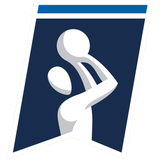
NET? Quadrants? Deciphering lingo about NCAA tourney bids
If the talk about bubble teams and NCAA Tournament bids was just about the number of wins and losses it would be a simple conversation.
But the Division I Men's Basketball Committee uses the NET rankings and a four-tiered “quadrant” system to determine who is in or out. And that can be confusing.
The committee issues 36 at-large bids for teams that don't earn automatic invitations. The process includes using an analytical formula.
Here's a look at key elements to committee evaluations ahead of the March 15 bracket reveal:
NET
The process starts with the NCAA Evaluation Tool, or NET.
The NCAA moved last season from the RPI to the NET, a more analytical formula incorporating factors such as game results, strength of schedule, game location, scoring margin and net efficiency for both ends of the court.
Yet NET rankings are largely a sorting tool for team resumes, illustrated by last year’s Selection Sunday results.
For example, Houston was No. 4, followed by Kentucky at sixth and North Carolina at seventh. Yet the committee reversed the order when putting each in the Midwest Region, with the Tar Heels as the top seed.
Further down, St. John’s earned an at-large bid at No. 73, along with Arizona State (63), Minnesota (61), Seton Hall (57), Temple (56) and Ohio State (55). Conversely, North Carolina State (33), Clemson (35), Texas (38), Furman (41) and Memphis (46) were left out.
In short, it’s less about where teams stand in the NET compared to where their opponents do. And that's where quadrants come in.
THE QUADRANT SYSTEM
The NCAA adopted a four-tiered system for 2017-18 to better evaluate game results. It uses the NET to sort games from Quadrant 1 at the top through Quadrant 4, with games away from home carrying more weight.
It’s worth noting: game results can move between quadrants throughout the course of the season depending on the fluctuations of an opponent's NET ranking.
QUADRANT 1
“Quad 1” wins are the headliners on any resume.
The quadrant includes home games against teams in the top 30 of NET, neutral-site games against the top 50 and road games against the top 75.
For example, Kansas – No. 1 in the AP Top 25 – entered March with an 11-3 record in Quadrant 1. That record included wins on a neutral court against Dayton (third in NET) and at Baylor (fifth) along with losses at home to Baylor, to Duke (sixth) on a neutral court and at Villanova (13th).
Committee chairman Kevin White, Duke’s athletics director, pointed to Quadrant 1's impact during last month’s reveal of the top 16 seeds so far. Gonzaga got the third No. 1 seed for the West Region ahead of unbeaten San Diego State, earning a potential closer-to-home trip to Los Angeles instead of New York for the East Regional.
“It’s such a fine line,” White said. “I think at the end of the day … it was the fact that the Zags had two really good wins – we thought maybe better wins – over Arizona and Oregon.”
QUADRANT 2
Wins landing here still can help a team’s resume, even if they’re not of the headline-grabbing variety.
Quadrant 2 includes home games against teams ranked Nos. 31-75 in NET, neutral-site games against teams ranked Nos. 51-100 and road games against teams ranked Nos. 76-135.
QUADRANT 3
This is the most likely category for a team to suffer a “bad” loss.
Quadrant 3 includes home games against teams ranked Nos. 76-160 in NET, neutral-site games against teams ranked Nos. 101-200 and road games against teams ranked Nos. 136-240.
For schools in the five power conferences (Atlantic Coast, Big 12, Big Ten, Pac-12 and Southeastern), this is where many games against teams near the bottom of their league standings end up.
QUADRANT 4
Quadrant 4 features the easiest games on the schedule. It includes home games against teams ranked No. 161 or worse in the NET, neutral-site games against No. 201 or worse and road games against No. 241 or worse.
While losses here can wound a resume, they don't happen often. Last year's 36 at-large teams went a combined 219-4 in Quadrant 4 as of Selection Sunday. That included St. John’s, Arizona State, Temple and Belmont – the last four teams in – going 39-2, with both losses by the Sun Devils.
STRENGTH OF SCHEDULE
There’s one other noteworthy component: schedule strength, particularly when it comes to what teams control outside of conference play.
Of last year’s 36 at-large bids, only four teams had nonconference strength of schedules ranked 200th or worse (Michigan, St. John’s, Temple and Iowa) as of Selection Sunday. Meanwhile, N.C. State fell on the wrong side of the bubble with no marquee win and a nonconference strength of schedule that was last in Division I (353rd).
___
More AP college basketball: https://apnews.com/Collegebasketball and http://www.twitter.com/AP_Top25
___
Follow Aaron Beard on Twitter at http://www.twitter.com/aaronbeardap







